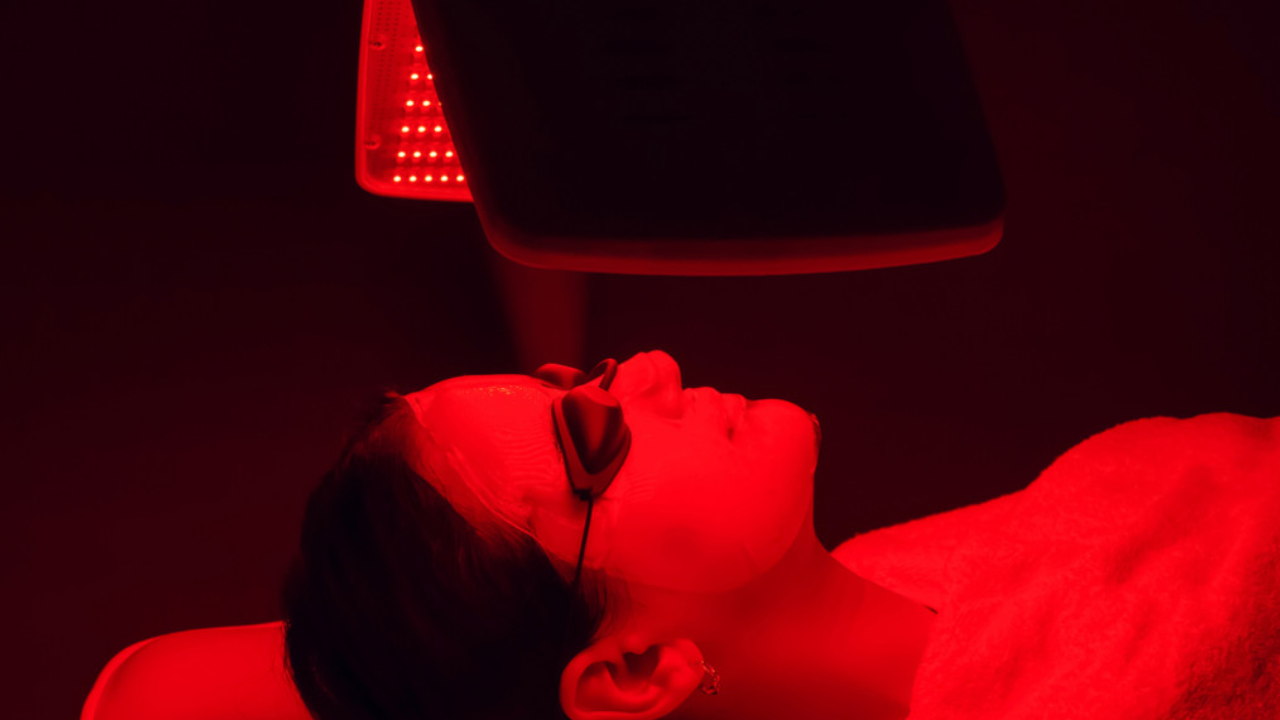Red light treatment, sometimes referred to as photobiomodulation (PBM) or low-level laser therapy (LLLT), is the application of low doses of red or near-infrared light to the body. This light enters the skin and is taken up by cells, where it promotes a host of beneficial biological consequences. It is thought to promote cellular regeneration and repair, lessen inflammation, increase circulation, and boost the synthesis of ATP (adenosine triphosphate).
Using low-level red or near-infrared light to stimulate cellular activity, red light therapy at home promotes skin health, pain alleviation, and general well-being. Small gadgets like light panels or handheld units make it easy for people to incorporate this non-invasive treatment into their everyday activities. Benefits including increased collagen synthesis, less inflammation, and improved muscle recovery are frequently reported by users.
Does Red Light Therapy Aid in The Treatment Of Pain?
In terms of pain reduction, red light treatment has indeed shown potential. It might lessen pain and inflammation brought on by ailments including arthritis, muscular aches, and joint discomfort by entering the skin and promoting cellular activity.
Because the therapy is non-invasive, patients frequently feel better without experiencing the negative consequences of conventional pain control techniques. Red light therapy might vary in how each person responds, so it’s best to speak with medical professionals if you want specific advice on how to include it in your pain management routine.
Red Light Therapy Is Safe At Home
When used as instructed, red light treatment also referred to as photobiomodulation (PBM) or low-level laser therapy (LLLT) is usually regarded as safe for use at home. But it’s crucial to remember a few crucial points:
Device Quality and Certification:
The red light therapy device’s quality is one of the most important safety factors. Select gadgets from reliable producers who follow safety guidelines and requirements. Verify the device’s certifications or approvals from the appropriate authorities to be sure it has passed stringent testing.
Wavelength and Intensity:
Red light treatment has therapeutic benefits that vary with wavelength. The depth of treatment is affected by the different wavelengths’ varied degrees of skin penetration. It’s important to know which wavelengths are best for the purpose you have in mind. Additionally, consider the intensity of the light emitted, as extremely high intensity may lead to adverse effects.
Eye Defence:
Red light therapy may cause eye damage, which highlights the importance of wearing appropriate eye protection. Purchase goggles or glasses that are made to block the particular wavelengths that are utilized in the therapy. To avoid eye damage during sessions, eye protection is crucial.
Guidelines for Duration and Frequency:
It is crucial to follow suggested rules regarding the length and frequency of sessions. Administering red light treatment excessively or prolonging sessions over the suggested time frames may cause unexpected negative effects. Always adhere to the manufacturer’s instructions or seek the advice of a healthcare provider for specific instructions.
Pre-existing conditions and skin sensitivity:
People who have sensitive skin or pre-existing skin disorders ought to use caution. Red light treatment may irritate people if it interacts with certain drugs or skin disorders. Before adding red light treatment to your regimen, especially if you are concerned about skin sensitivity, seek medical advice.
Pregnancy Concerns:
Women should use caution when undergoing red light therapy if they are expecting. The possible impacts on fetal development are unclear, notwithstanding the few evidence of harm. To guarantee the safety of the pregnant patient as well as the unborn child, seeking medical advice before utilizing red light treatment is advised.
Possible adverse Effects:
Although red light therapy is thought to be safe in general, adverse effects are possible with any treatment. Possible side effects include mild headaches, weariness, and discomfort, but these are usually transient. You must get expert assistance if adverse effects intensify or persist.
Conclusion
Red light therapy has the potential to improve health and wellness when used at home, but safety must always come first. Through the selection of high-quality devices, adherence to suggested protocols, and consultation with a professional when necessary, people can optimize the potential advantages of red light therapy while mitigating associated dangers, guaranteeing a safe and efficient at-home experience.
